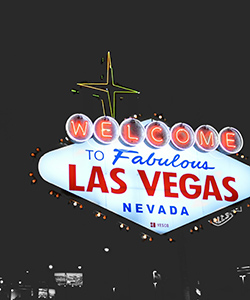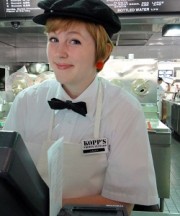
Many small business owners travel to Las Vegas for trade shows. Trade shows are an important part of your company’s marketing plan. To ensure your event is a success, it takes preparing months beforehand. You should plan for your event six months in advance if you want real results. Here are some tips for getting the most out of your trade show.
Determine Your Goals
Before you join the event, think about the outcome you expect from the sponsorship to determine your goals. Make sure these ideas align with your advertising and marketing objectives to determine if this event will help you meet your goals. Will you reach your target audience at this event? Do you have something unique to offer that makes you stand out among the other sponsors?
Why are you attending the event in the first place? Do you want to network with other professionals? Do you want to create brand awareness and get more business? Determine some measurable goals, like attracting 300 new leads or performing 25 demos which can lead to more opportunities. Lease a virtual office Las Vegas style that allows you to hold meetings and work offsite peacefully and professionally.
Decide Your Messaging
You need to plan for your event as soon as possible. Planning for a trade show involves more than coming up with a checklist of things you need. If you determined whether this event meets your target audience and marketing objectives and you’ve determined your goals, it’s time to focus on your messaging and strategy so it relates to your audience and goals.
What kind of products do you plan to promote? Which services are you going to highlight in your presentations? What do your products and services say about your brand? Come up with these answers so you can get clear about your messaging.
Plan Your Event Strategy
With your messaging in mind, you should meet with your marketing team to determine the brand and theme for your show. Discuss all of the elements needed to tie it together and what needs to be done beforehand. Create an event strategy brief that keeps you organized and aligned with your goals. Send an e-mail to everyone who’s attending the event within your organization so they know what kind of goals you’re trying to accomplish.
Invest in Booth Design
The goal of your trade show should be to attract your target audience. You don’t have to detail everything that your company does. Create a clear and concise message that fits with your theme and branding. When an individual visits your booth, they’ll immediately know what your company is about and will want to find out more.
You should also invest in a booth designer who can help you with the design. Your booth represents your brand. You don’t want it to look like an elementary school project. Use a professional designer or design firm that can help you create a booth that is attractive, eye-catching, and professional. The location of your booth is important; place it near the entrance or in a busy section of the conference.
Prepare for Your Event
You may have an exciting booth, tempting giveaways, and a great marketing strategy, but if your staff isn’t ready then it could all go to waste. Your staff needs to be prepared as much as you are. Inform them about your overall goals and outcome for the event. Let them know about your messaging and any special promotions you’ll be offering.
They also need to know how to communicate with guests at the event. Give them a list of lingo or lines to use to initiate conversation with potential customers. Have a pre-event huddle to make sure everyone understands what’s required of them. Make sure your staff is energetic, engaging, and outgoing enough to talk to people who walk by the booth.
You should also enforce a dress code. What you wear is important since it’s a reflection of the company your work for. It’s important for your staff to look professional and well put together. You don’t want your employees to come to the trade show in casual or sloppy clothing.
Don’t Forget About Following Up
You returned from the trade show with hundreds of leads. It may be tempting to send a mass e-mail, but it’s not the best solution. Consider your messaging when it’s time to follow-up. Responding too soon will make you seem desperate, but a prompt response is still important. You should follow-up with your leads within 24 hours.
Include a strong call-to-action that will lead them to take action. It could include purchasing an exclusive item or using a discount on a product. Make sure to personalize your e-mails to some of your hot leads, but don’t just focus on them. Continue to establish a relationship with the other leads you received at the event.
Create a series of e-mails that will provide additional information and resources that will guide them through the sales process. Address the first time they spoke with you at the event and when they’re ready to make a purchase.







Discussion